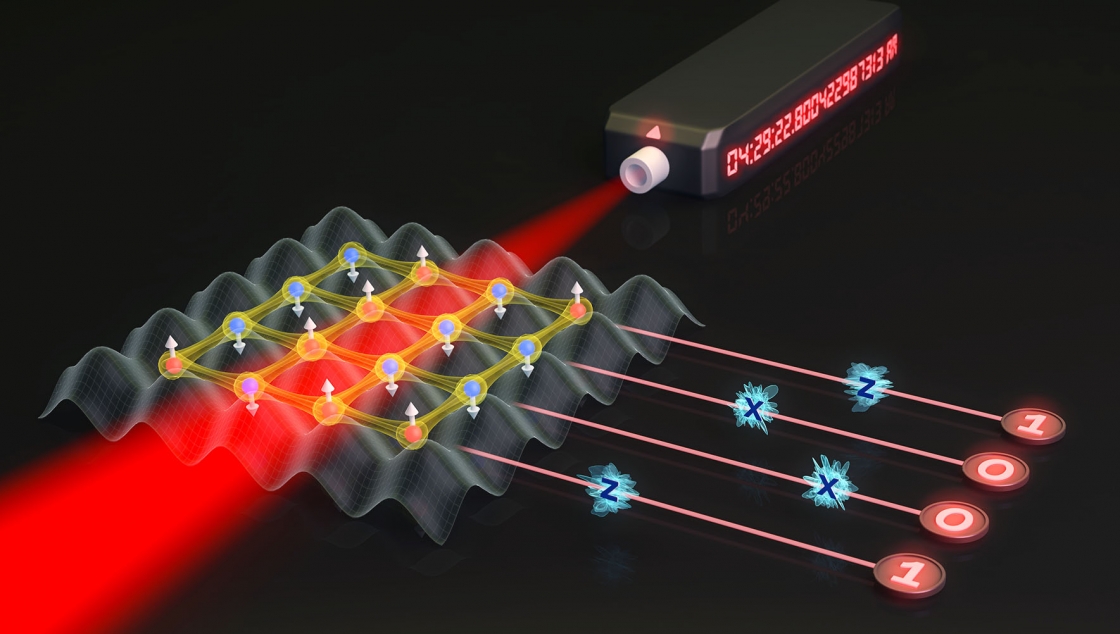When it comes to computers, quantum is the next big thing. Quantum computers could solve complex problems that even today’s most sophisticated super computers cannot.
“One of the holy grails in the quantum world is to build that quantum computer,” JILA Fellow Ana Maria Rey said. “You want a universal machine that uses quantum elements to model and understand the quantum world.”
Let’s back up and explain what makes a quantum computer different from a classical computer. Whether it’s your smartphone or laptop, information in traditional computers is stored as single bits – a 1 or a 0. Those bits have to pass through a logic gate, which performs a simple calculation and spits out a single answer. Logic gates get combined into circuits which run calculations with thousands of bits of information.
But even supercomputers’ enormous memory can only process so much. Running simulations with numerous variables or sorting through complex data sets takes a long time for our classical computers. At some point, their memory will overload. In a quantum computer, a qubit – like an atom – may exist in a superposition; it is both a 1 and 0 at the same time. Measure a qubit and it collapses into a 1 or 0. And when that qubit is entangled, its entangled partners will follow suit and collapse too. Pass those entangled qubits through a quantum gate and you can get all those possible combinations at once. Simply put, since a quantum computer can make operations in parallel, it can make calculations significantly faster than a classical computer.
That first step to creating the quantum computer is tricky. The qubits need to be in a cluster state, a neat configuration with all the atoms properly entangled.
“The hard part is connecting the qubits because that is necessary to generate entanglement,” said Mikhail Mamaev, a JILA graduate student in Rey’s group. “And experimentally it's very difficult to do.”
Now there may be a quick and easy way to do it. In a paper published in Physical Review Letters this April, Mamaev proposed a way to create highly-entangled cluster states using an optical atomic clock.
Tying qubits in knots
All of the atoms need to be at just the right energy level for them to entangle with each other. Typically, entangling all of these atoms in the right configuration is a bit like knitting by hand, tying knots between each particle one by one in a row. It takes a long time, and it’s pretty fragile. And just like knitting a sweater, getting a three-dimensional cluster of entangled atoms this way is a long and tedious process.
Thankfully, at JILA there’s a tool sitting right under physicists’ noses that could do the hard work for them. When visiting fellow Rainer Blatt saw the optical atomic clock in Jun Ye’s laboratory, he suggested that the clock’s laser could weave atoms into a cluster state for them.
“We have this clock with super-high coherence, super-clean, super-orderly. It is what lets us have a chance at making this thing,” Mamaev said. “The tough part here is getting all these links to show up well enough and at the same time, and with a clock you can do that.”
The clock can create those cluster states in a hundred milliseconds. Not only can it create these cluster states, it can keep them stable for ten seconds. That’s a long time in the quantum world, long enough to run measurements. And by making a simple measurement, the entangled links break, giving physicists information.
“We can create them and have enough time to measure,” Rey said.
Full speed ahead
Creating a quantum computer this way is on its way to the lab. The group published their work on arXiv and when Mamaev, lead author on this paper, presented it the funding agency, they quickly created a grant to start running the experiment.
“Then it's going to be very exciting. Once you have the cluster state, you can start doing quantum computing with clocks. That's a new direction for the field,” Rey said.
This research was supported by the National Science Foundation's JILA Physics Frontier Center.




